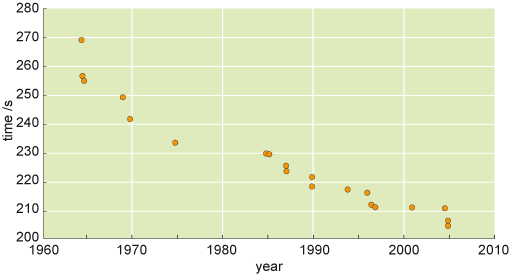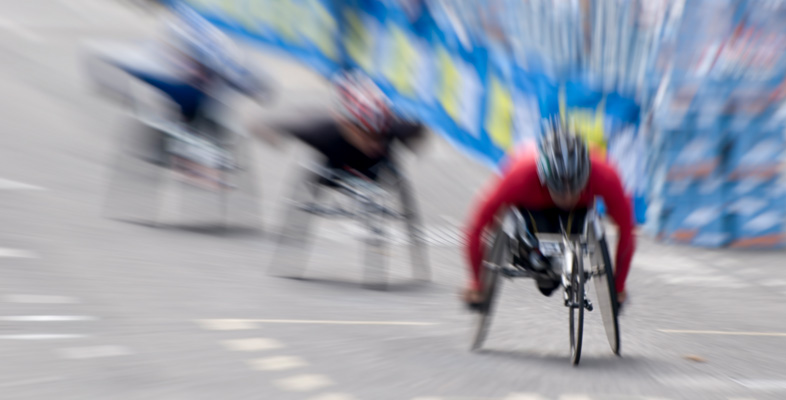4.2 World records in track cycling
To examine the effect of aerodynamics and technology on cycling, and other wheeled sports, it might seem natural to consider the progression in world records.
Figure 11 shows the progression in the women's world record for the individual pursuit event, in which two cyclists compete in a velodrome over a distance of 3 km. Look carefully at the graph and then answer the questions that follow.

SAQ 2
Earlier in this course (in SAQ 1), you saw that aerodynamics began to affect the design of cycles in the mid-1980s. Study the data in Figure 11. Is the development in cycle design reflected in the progression in world record times for the women's individual pursuit event?
Answer
While the graph shows that record times have improved significantly, it is hard to see any sudden change in the mid-1980s, when the aerodynamic improvements were introduced.
You can see some change, but no greater than the change in the 1960s.
SAQ 3
You also saw (in Activity 5) that carbon fibre began to be used in track cycling from the early 1980s onwards. Is this particular development in cycle design reflected in Figure 11?
Answer
Once again, it is hard to see any sharp improvement in world records at this time. The improvement in the record is fairly continuous.
So, one conclusion from analysing this graph is that it is hard to identify clearly the effect of technology on cycling performance simply by looking at the progression in world records. There are so many factors that lead to better performance (e.g. improved equipment, better training, more-professional athletes) that the effect of one particular technology is hard to see.
